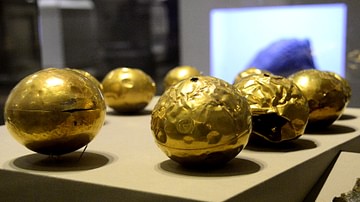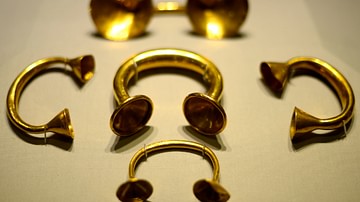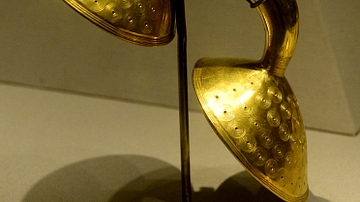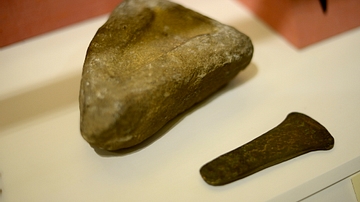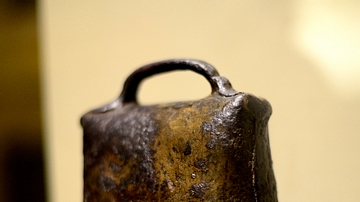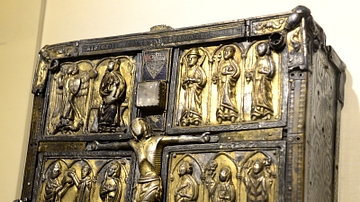Illustration
Sheela-na-gig figure, carved from stone in Ireland, c. 1100-1200 CE. Such Sheela-na-gig figures prominently display their vulvas. Their meaning is still debated: as they were often found on churches and secular buildings in Ireland, Britain, France, and Spain after 1100 CE, they may be understood as Christian warnings against lust. Another interpretation understands them as symbols of fertility and regeneration, as their emaciated bodies evoke death and their vulvas represent birth and life.
The British Museum, London. WITT.258.
About the Author
Photo Location
This photograph was taken at the following location:
Cite This Work
APA Style
Crabben, J. v. d. (2023, August 16). Sheela-na-gig. World History Encyclopedia. Retrieved from https://www.worldhistory.org/image/17742/sheela-na-gig/
Chicago Style
Crabben, Jan van der. "Sheela-na-gig." World History Encyclopedia. Last modified August 16, 2023. https://www.worldhistory.org/image/17742/sheela-na-gig/.
MLA Style
Crabben, Jan van der. "Sheela-na-gig." World History Encyclopedia. World History Encyclopedia, 16 Aug 2023. Web. 09 May 2024.


